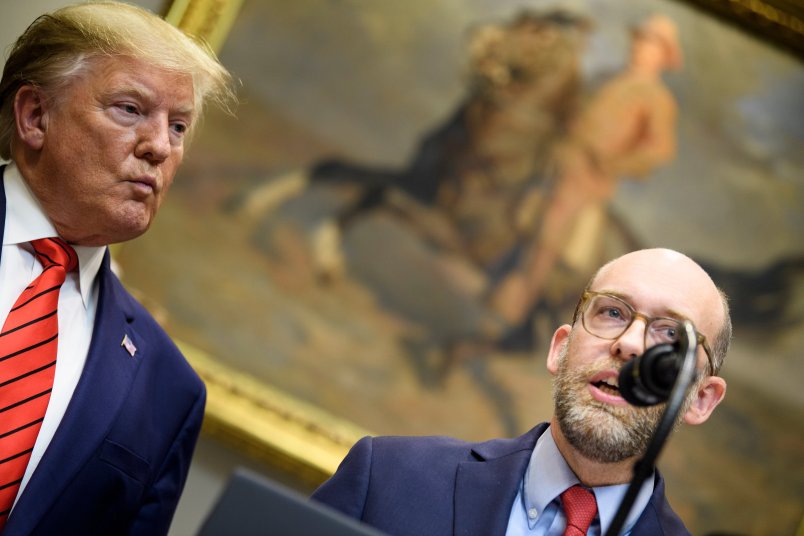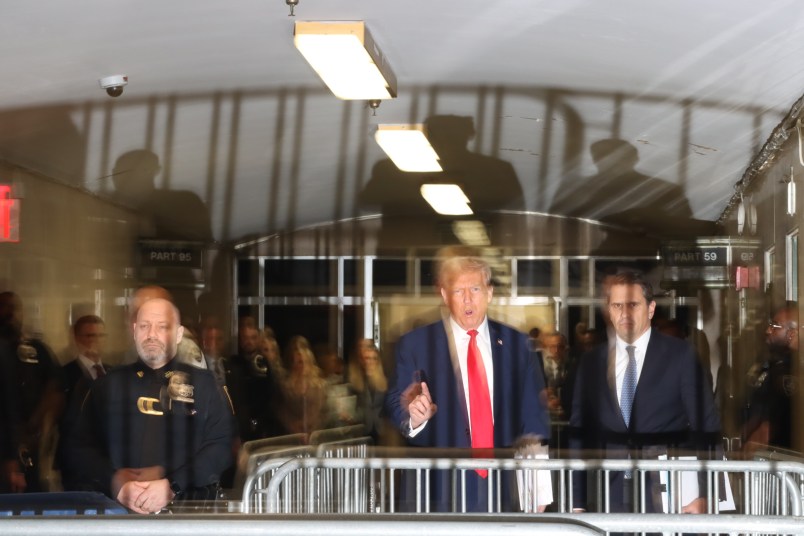As the President boarded the plane for Florida Wednesday morning, bidding farewell to his presidency in a brief speech at Joint Base Andrews, it appeared his administration had failed to carry out one of the most ambitious but under-the-radar power grabs the federal government had seen in years.
In October, two weeks before Election Day, the President signed an executive order creating a new tier of the civil service — called “Schedule F” — that would make a broad swath of workers on the federal payroll much easier to fire.
Those employees designated as Schedule F would have been more like the political appointees that cycle in and out of the government with each administration — subject to political pressure and stripped of certain job protections guaranteed to protected government workers. The number of Schedule F employees could have reached into the thousands or tens of thousands, and the execution of the order would have set the stage for a hugely consequential legal battle over the government’s personnel practices.
The executive order instructed executive branch agencies to conduct a “preliminary review” of their agency positions within 90 days of the order to see which could be reclassified. That 90-day window closed on Jan. 19, the day before the new President would take office — sparking fears of a last-minute purge.
But so far, only two agencies are known to have assembled lists: the White House Office of Management and Budget (OMB) and the Office of Personnel Management (OPM), the government HR division that itself is tasked with implementing the Schedule F order. And even these lists have not yet affected anyone’s status.
Responding to a lawsuit from the National Treasury Employees Union on Friday, government lawyers made this point themselves in a motion to dismiss the case.
“[T]he Executive Order has not ‘stripp[ed]’ any employees of any protections,” they wrote. “Nor has Plaintiff alleged—and nor could it—that either Defendant will do so imminently. Indeed, over two months have passed since Plaintiff filed this Complaint, and still no employee has been assigned to Schedule F, and nor has any agency with employees represented by Plaintiff even submitted a petition for rescheduling pursuant to the Executive Order.”
White House budget director Russell Vought told senior staff last week that the administration was out of time to reschedule OMB employees, The Washington Post reported Sunday, citing two unnamed officials familiar with his comments.
While one unnamed senior administration official, who the Post said was speaking for the White House, said “we are moving forward” with the Schedule F order, another unnamed senior administration official familiar with the order told the Post: “It logistically was never going to be possible for this to be put into effect.” (Neither OMB nor OPM responded to TPM’s requests for comment.)
“We aren’t hearing anything about reclassifications at all, seems like maybe the incompetence won out over the nefariousness once again,” said Aaron Fritschner, a spokesperson for Rep. Don Beyer (D-VA), whose D.C.-adjacent district includes many federal employees and who was a vocal opponent of the Schedule F order.
Questions remain about what President-elect Biden will do with Schedule F. Incoming White House press secretary Jen Psaki told reporters Tuesday that “there are many more actions to be taken even in the next 10 days” with regard to the federal workforce, and that the Biden administration would soon have more to say on the matter.
While Biden is considered likely to reverse Trump’s order, it may take time to assess what steps were actually taken within the executive branch, if any, to carry out the change to Schedule F.
Allan Rosenbaum, president-elect of the American Society for Public Administration, told TPM Tuesday that it appeared the administration had run out of time — and perhaps bureaucratic will, in light of the recent attack on the Capitol — to implement Schedule F.
Still, Rosenbaum said, until the moment Trump leaves office, “I wouldn’t put anything past these characters.”










